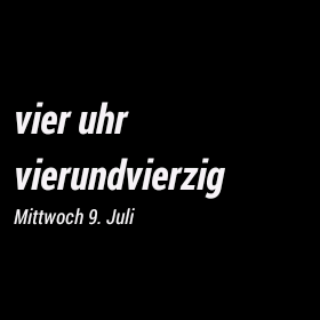 I got my LG G Android Wear smart watch earlier this week and dove right into developing for it.
I got my LG G Android Wear smart watch earlier this week and dove right into developing for it.
My first project was Deutsch Uhr, a text-based German language watch face inspired by my favorite Pebble watch face. I had fun adding animations for the hour/minute/day changes and learning what makes a Wear app tick (pun intended, I always do). A big thanks to my friend Daniel Ward for help getting started. Be sure to check out his Binary Watch Face, which was the first Android Wear watch face to appear on Google Play a couple weeks ago.
... ➦This year’s Google I/O developer conference once again gave developers plenty to be excited about. As expected, we heard about the next release of the Android operating system, Android Wear smart watches, and updated development tools. Rumored products & services such as Android TV, Android Auto, and Google Fit were also announced. Perhaps the most exciting and far-reaching announcement was the new Material Design language, which replaces the now dated looking Holo with a consistent look for all platforms. Enterprise users can now securely separate work & personal data with the Android Work suite of services. Finally, Android Cardboard showed us how to make a DIY version of an Oculus Rift style VR headset.
... ➦I’m thrilled to be speaking at Droidcon Berlin this year. I fell in love with the city on my first visit and the conference was a perfect reason for another visit. Attempts to try out my very basic German skills have shown me that I have a long way to go. However, I am proud to say that I have managed to make a few purchases without panicking and falling back to English.
... ➦I gave a two hour tutorial on developing for Android at work today for our weekly tech talk. Similar in style to my coworker Aaron Ortbals’ tutorial on Ember.js, I showed how to build a client for GitHub’s Events API.
Topics included:
You can find the source code and the slides for the tutorial on GitHub.
Wrist Presenter turns your Pebble Smartwatch into a remote for presentations running on your Android or iOS device.
... ➦When I first decided to get into Android development, I created the Music Library app to catalog my vinyl collection. It served me well as I learned the ins and outs of Android programming including content providers, interacting with other applications via intents, working with the file system to save/load images, making API requests, etc. In order to test the workings of the Android app market, I published the ad supported Music Library Free and the paid Music Library versions of the app. In addition to not displaying ads, Music Library also included the ability to backup your collection to the device’s SD card and export data to a Google Drive spreadsheet.
... ➦Each year, I keep a list of albums that I find myself listening to frequently. This is the time of year when I review the list and pick my top 10. I ventured into hip-hop and electronic music a bit more this year. Psych rock and 90s style fuzz are also well represented.
When I initially needed to integrate OAuth request signing with Volley in my Android app, I used the Signpost library. It was fairly straightforward to build a URL, pass it to the Signpost OAuthConsumer, and retrieve a new string with the appropriate OAuth parameters added. Unfortunately, as you can see from the commit history, there has been very little activity over the past year.
Increasingly, I see recommendations for Scribe. The project is very active and it makes implementing OAuth request signing as easy as it’s likely to get.
... ➦I’m giving another Intro to Android Programming talk at TechStreet Houston today. The slides are very similar to my previous talk at Houston TechFest, but here is the link for today’s presentation.
I thoroughly enjoyed the conference once again this year. I highly recommend it to anyone who has anything to do with Android.